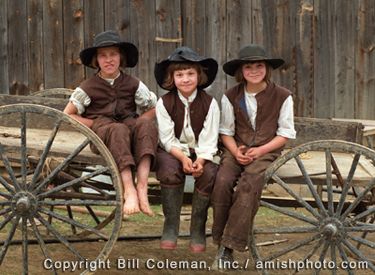The buggies. The farms. The laundry hanging out on the line, the girls learning how to bake, the boys in the fields. Amish life seems so idyllic!
And so we Christians gobble up millions of romance novels about the Amish. We travel to Lancaster, Pennsylvania, to see them up close. We hold them up as proof that even in this busy world you can still live a simple life.
But what if, in so doing, we’re covering up a sinister side?
While I was away on vacation I read the book Tears of the Silenced by Misty Griffin. In it she documents her horrific abuse (as well as her sister’s) at the hands of her psychotic mother and step-father, and then the danger and evil they were exposed to when they moved to an Amish community which did not deal appropriately with the sexual predators in their midst. It was so awful I almost thought she may be making some of it up. So I researched online, and found court cases that were eerily similar, and academic papers showing the same thing. There is a crisis in the Amish community.
Perhaps, in and of itself, that needn’t concern us that much. After all, there’s a crisis of female genital mutilation in Africa and the Middle East. There’s a crisis of sexual abuse in the Catholic church. There’s a crisis of child sex slavery in Asia.
Yet this, I believe, is different, because Christians, by romanticizing the Amish and publishing so many books that depict them in totally unrealistic ways, inadvertently cover up and perpetuate the problem.
A few years ago I was also sent the book Other Loves All Flee: One Family’s Journey from Legalism to Grace by Leona Koehn Nichols. She was writing not about the Amish but about a Holdeman Mennonite community, which is almost as strict (except for the electricity part). And she makes so many of the same points! And so I want to challenge us to open up our eyes to what is going on in these supposedly “idyllic” communities.
1. There is absolutely no understanding of grace–and therefore no understanding of salvation
The Amish live by works. A multitude of rules governs their daily lives, from what they can wear, what they can play with, how they can behave, what they must do on Sundays, and even what happens if someone breaks the rules.
The emphasis is not on serving God, even if it may be phrased that way. The emphasis instead is on preserving the community, exactly as it is. In Other Loves All Flee, Leona tells what happens when she and her husband have an honest encounter with Jesus. They’re so excited they tell others. And then they are told that they can’t remain in the community and believe that you can pray and hear God, because only the elders can tell you what God says. That’s the only way to preserve uniformity. So no one should be praying on their own.
2. There CAN’T be any understanding of grace and stay as they are
Practically any Amish romance I have read features the main characters coming to an understanding of salvation (they are Christian books, after all) but then deciding to remain in the Amish community. This sounds lovely. But it is absolute nonsense. The whole point of the Amish and other hyper-conservative Mennonite communities is that they live “apart”. They are not “the English”. And so the emphasis is on preserving a culture that’s different. You can’t preserve such a culture if people are allowed to think for themselves or to have their own relationship with God. What if God were to tell them something different from what the elders believe?
Anyone who thinks for themselves is therefore a threat to the community. And so what these romance books depict isn’t real. That is not to say that I don’t believe that there are true Christians within the Amish communities. There may very well be. But the constant pull they must feel can’t be easy, and the community itself doesn’t encourage this.
3. The Bible is often incomprehensible and quite unknown
In fact, the Bible that they read and the prayers that they say are often in High German–the language spoken in the 1500s. Just like Catholic masses used to be said in Latin so the hearers wouldn’t understand, so much of the religious life of the Amish is done in a language that others can’t understand. And they are not encouraged to read the Bible for themselves (in fact, in Tears of the Silenced Misty’s KJV Bible is taken away from her by the Amish when she starts to question some of what they believe. They decide her having a Bible she can read is too dangerous).
4. Women are exhausted
Their lives are hard work, from sun up to long past sun down, and they rarely get enough sleep. To have huge families with no electricity is no easy task.
Sure, baking bread and growing vegetables and sewing your own clothes looks like a really neat way to live–and it is. But when it’s packaged with heavy rules you must follow, right down to how wide the seam is on the garments you sew or how high your bonnet is, it’s not a fun experiment at counter-culturalism. It is an unbearably heavy yoke.
5. Many women suffer from depression
I have good friends who are physicians near an Amish community in Ontario. And they will attest to the fact that Amish women are worn to the bone. Studies show that the rates of depression among Amish women are much higher than the general population.
6. Cruelty runs rampant
Part of the depression stems from the fact that cruelty seems to be a big part of Amish culture, even if we don’t see it. When the emphasis is on being a community and not causing waves, and the threat of banishment and community punishment is ever so real, then gossip tends to run rampant. Judgment is a huge problem. Any book about the Amish realistically shows this, but Tears of the Silenced especially depicted the bullying that often happens.
In fact, one of the things that surprised the main characters in both books I read was how nice and kind people were among “the English”. They had grown up their whole lives hearing how depraved the English were, but it was only among the English that they encountered true kindness. Their own communities were harsh and judgmental.
The Amish also believe that the earth was given to them to have dominion over–and hence animals are their property. Animal cruelty is quite widespread (just Google court cases involving the Amish). And the Amish are responsible for about 70% of puppy mills in the United States, according to some studies. The dogs are kept in cages their whole lives, and only removed for breeding. It is really quite horrendous.
7. There is an epidemic of sexual and physical abuse
Because of the culture of secrecy, male domination, and obedience of wives and children, it’s hardly surprising, then, that abuse in Amish communities is at levels far higher than the general population. After all, if the community tells men that women are their property and that wives must automatically obey; if the community tells boys that they are more important than girls; if the community tells people that they must never bring shame to their families (which is awfully easy to do given the gossip mills), then the community is a perfect breeding ground for abuse.
The rates of brothers abusing their sisters is also really common. Mary Byler’s case became quite well known in the news media in the 2000s; she had been raped literally hundreds of times by her brothers Eli and Johnny. At one point Johnny said that Amish boys believe it is normal to do this to your sister. That’s what she is for until you can get married. (BeliefNet has a huge story about the sexual abuse crisis in the Amish community here.)
8. There is no way for an Amish child to report the abuse to authorities
Amish children go to school only until Grade 8, but often at schools run by their own community. If one ever talks to the police, one is automatically punished by the community, no matter the underlying crime. Children have very little exposure to anyone outside the community, so they have very little way of stopping it. Even more, they grow up believing that this is normal, because they have no one else telling them otherwise. And they have so little education they truly don’t know what to do.
9. The community protects the abuser
So what happens if abuse allegations come to light in the Amish community? This is really the strength of the book Tears of the Silenced, and the main reason that Misty wrote it. It is not that sexual abuse happens among the Amish; sexual abuse happens everywhere, after all. No, the problem is how the Amish handle sexual abuse.
Here’s what happens: the Amish believe in God’s mercy and forgiveness, they say. If a person confesses, then, they must be forgiven. Of course, they’ll be punished. But the harshest punishment meted out is 6 weeks where you must remain separated from other community members (meaning that you don’t eat with them and sometimes don’t talk with them, though you can still live in your house). After that six weeks you are declared “forgiven”.
Then, if the sin is ever brought up again, the person bringing it up is now sinning. And they can be banished if they don’t forgive.
So if a father serially abuses his daughters, all that happens is that he’s punished periodically for six weeks. But he’s not removed from the home. The wife is not offered any protection. The children are not offered protection. They are, after all, his property and he is the head of the house. And so they must obey and fall into line, because they must forgive, or else they are the ones at fault.
Now, how many of you believe that a father who sexually abuses his daughters will stop after six weeks of separation, with no counselling and no real repercussions at all?
10. It is impossible for an Amish mother to protect her children from abuse within the community
This is the main reason why Misty left the Amish community. She saw so many families where sexual abuse was passed down from generation to generation, and the mothers knew about it and could do nothing. If they went to the police, they’d be banned.
An article from the Lantern Project explained it this way:
Amish do not believe in divorce, so mothers whose children are assaulted face a stark dilemma, Anna Olson said.
“You stick with it, or you leave,” she said. “But if you leave your spouse, you’re out. They’ll excommunicate you. And when that happens, the Amish consider you dead.”
Mast said mothers and children, who are not formally educated beyond the eighth grade, would be “terrified” to take accusations of sexual abuse to outside authorities.
“And if they went to the police, where do they go from there?” she asked.
“Amish children do what they’re told,” Olson said. “They don’t dare say a word.”
How could Misty have children if she couldn’t protect them?
Both Other Loves All Flee and Tears of the Silenced are self-published memoirs. Sure, they likely could have done with a little more editing, but I truly found them absolutely riveting. I couldn’t stop reading Tears of the Silenced. It was so horrific I thought she may be making some of it up, until I googled it and found so many cases almost identical. This stuff really happens.
So here’s my challenge for you: If you’re absolutely taken by the Amish, and you’ve read all those novels and you love them, could you take your next book and read the other side? I think we need to wake up to the harm the culture can cause. And then we need to figure out a way to reach out to the girls and women there and tell them that they do have a choice, and there is safety and grace outside the Amish.
It is not only the Amish. Wherever we give individuals power over others, we distort the relationship that God intended and that can lead to all sorts of horrors. Please read that piece, too.
Now, what do you think? Have you read Amish romances? What do you think of the Amish culture? What should our response be? Let’s talk in the comments!


















Leave a comment